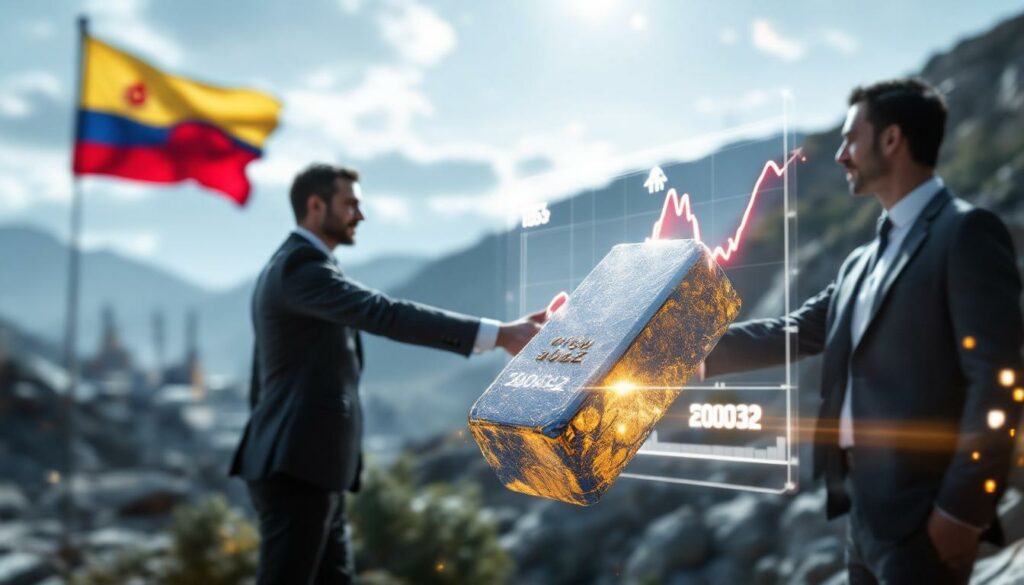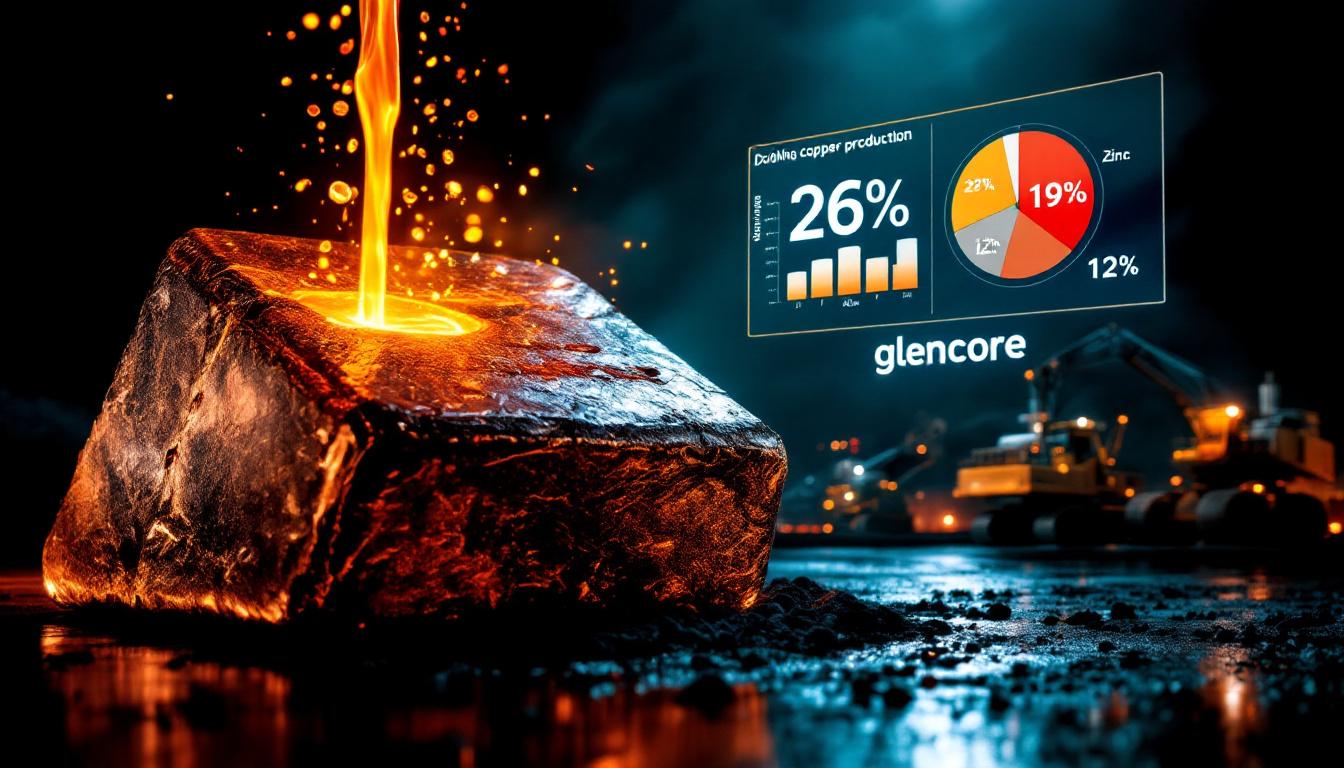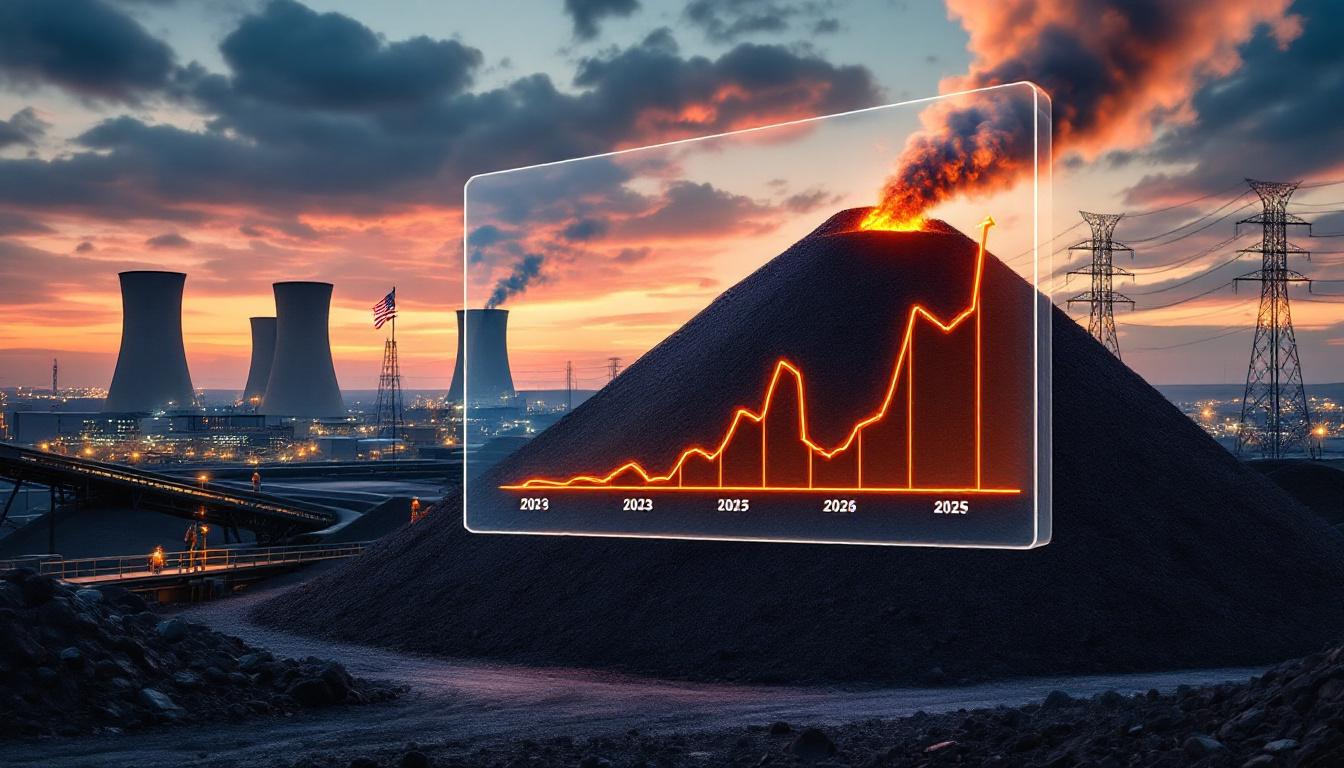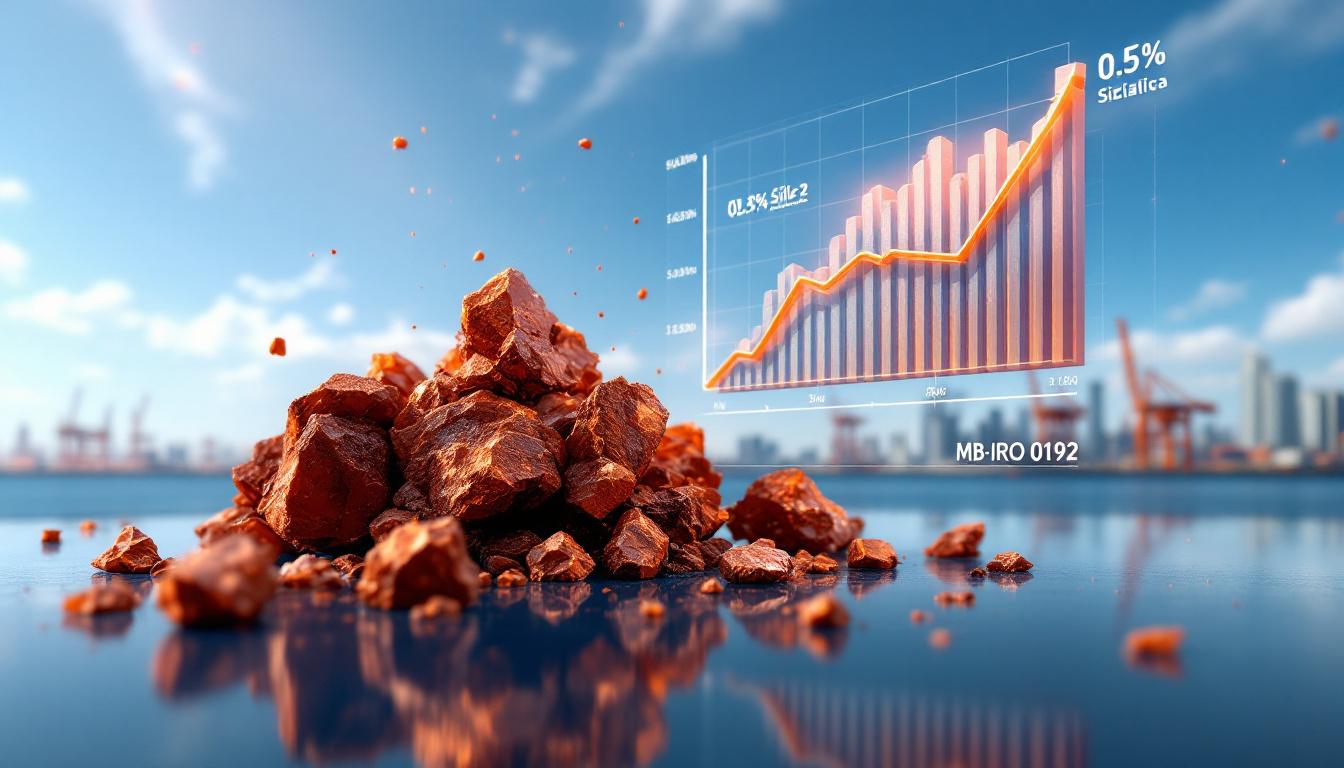Why Did South32 Sell Cerro Matoso to a Turkish Billionaire?
South32, the diversified mining and metals company, has finalized a deal to sell its Colombian nickel operation Cerro Matoso to CoreX Holding, a subsidiary owned by Turkish shipping billionaire Robert Yuksel Yildirim. This strategic divestment represents a significant shift in South32's portfolio management strategy and offers insights into both the company's future direction and the broader nickel market dynamics.
Understanding South32's Strategic Divestment
South32's decision to divest the Cerro Matoso operation stems from what CEO Graham Kerr described as "structural changes" affecting the nickel market. These changes have fundamentally altered the profitability outlook for nickel operations, particularly for ferronickel producers like Cerro Matoso.
"The transaction will deliver a clean separation for South32 and provide additional balance sheet flexibility to support investment in our growth options in copper and zinc," explained Kerr in the company's official statement. This clear articulation of strategy signals South32's intention to pivot away from nickel and toward metals it considers more strategically valuable.
The timing of the sale follows a comprehensive strategic review where South32 assessed its portfolio against long-term market forecasts. This evaluation concluded that nickel no longer aligned with the company's vision of focusing on "higher-margin minerals critical minerals energy transition."
Perhaps most importantly for shareholders, the deal structure ensures a complete transfer of both current and future liabilities to CoreX Holding, protecting South32 from potential environmental remediation costs or operational challenges that might arise at the Colombian site in the future.
Who is Robert Yuksel Yildirim and Why Did He Buy Cerro Matoso?
Robert Yuksel Yildirim stands as a significant figure in global shipping and resources, though one not widely recognized outside industry circles. As the driving force behind CoreX Holding, Yildirim has demonstrated a particularly bullish outlook on nickel's future prospects—a stark contrast to South32's bearish assessment.
Industry analysts note that Yildirim has been strategically expanding his resource portfolio, with a particular focus on metals critical to future industrial applications. The acquisition of Cerro Matoso represents one of his most significant moves in the mining industry evolution to date.
The Turkish billionaire's optimism about nickel prices appears to be based on long-term forecasts related to battery technology and electric vehicle production. While the current market faces headwinds from Indonesian supply expansion, Yildirim seems positioned for a longer time horizon than many institutional investors.
CoreX Holding, the acquisition vehicle for this transaction, adds the Colombian operation to Yildirim's growing resources division. The company has indicated plans to maintain operations at Cerro Matoso while potentially exploring expansion opportunities in the coming years.
What Are the Financial Terms of the Cerro Matoso Sale?
The transaction values Cerro Matoso at up to US$100 million (approximately A$152 million), with payment structured over a five-year period. This arrangement includes annual installments of US$20 million, providing a steady cash flow to South32 rather than a single lump sum payment.
This payment structure offers advantages to both parties. For South32, it ensures continuous income as the company transitions its portfolio, while for CoreX Holding, it reduces the immediate capital outlay required and allows for payments to be potentially funded from the operation's cash flow.
As part of the deal, South32 has committed to supporting the ownership transition throughout the payment period, ensuring operational continuity and knowledge transfer. This arrangement helps mitigate operational risks for the new owner while providing South32 with assurance that the payment schedule will be maintained.
The transaction remains subject to international merger clearances, though both companies have expressed confidence that these regulatory hurdles will be cleared without significant complications. The timeline for final completion depends on these approvals, but is expected within the current fiscal year.
How Has the Market Reacted to South32's Decision?
Financial markets responded positively, albeit modestly, to news of the divestment. South32's share price increased by approximately 1% following the announcement, suggesting investors generally approved of the strategic realignment.
This positive reaction comes against a challenging backdrop, as South32's shares had declined by 17.54% over the previous twelve months. The modest uptick indicates the market views this portfolio optimization as a step in the right direction for a company working to refocus its operations.
"South32's decision to exit nickel demonstrates the company's willingness to make tough portfolio decisions based on long-term market assessments rather than short-term price fluctuations," noted mining sector analyst James Roberts in his market commentary.
Several investment banks have maintained their "hold" ratings on South32 stock following the announcement, suggesting that while the divestment is viewed positively, investors are waiting to see how the company deploys its resources toward copper price insights and zinc opportunities before upgrading their outlook.
The transaction's relatively modest size—representing less than 1% of South32's market capitalization of approximately $14.05 billion—explains the limited share price movement, despite its strategic significance.
What Assets Remain in South32's Portfolio?
Following the Cerro Matoso divestment, South32 maintains a diverse portfolio of operations spanning multiple continents and commodities. Its aluminum operations include the Mozal facility (Mozambique) and Hillside operation (South Africa), complemented by the Worsley Alumina facility in Western Australia.
In the base metals sector, the company's flagship development project is Hermosa, located in Arizona, USA. This copper-focused asset represents a key growth pillar aligned with the company's strategic pivot toward energy transition metals.
The company also maintains its Cannington operation in Queensland, Australia, which produces silver, lead, and zinc—metals that align with South32's renewed focus on minerals critical for the global energy transition.
Perhaps most significantly, South32 holds substantial manganese assets in the resource-rich Kalahari Basin, positioning the company as a major player in a market essential for steel production and increasingly important for battery technologies.
This geographically diverse portfolio, spanning Australia, Africa, and North America, provides South32 with operational flexibility and reduced exposure to region-specific challenges—a strategic advantage in the volatile global mining landscape.
What Does This Sale Reveal About the Nickel Market?
The divestment offers compelling insights into divergent views on nickel's future. South32's decision to exit the sector points to concerns about structural oversupply, particularly as Indonesian production continues to expand at unprecedented rates.
The global nickel market has experienced significant volatility in recent years, with prices surging during supply concerns only to retreat dramatically as new production came online. This volatility has complicated long-term investment decisions for major mining companies.
Despite South32's bearish outlook, Yildirim's willingness to acquire Cerro Matoso indicates that some investors continue to see value in established nickel operations, particularly those with proven production history and existing infrastructure.
The contrasting perspectives highlight the complexity of forecasting demand for battery metals, where estimates of electric vehicle adoption rates and battery chemistry evolution create widely divergent outlooks for materials like nickel.
For context, nickel remains essential for many stainless steel applications and certain battery chemistries, but technological developments and supply expansion have created uncertainty about long-term price stability.
How Does This Transaction Impact South32's Future Strategy?
The sale of Cerro Matoso represents more than just a single asset divestment—it signals a fundamental strategic shift for South32. By exiting nickel production, the company is creating financial flexibility to pursue opportunities in copper and zinc, metals it views as offering superior long-term value.
This enhanced balance sheet flexibility comes at a critical time, as development costs for major mining projects continue to escalate globally. The freed capital, while modest in the context of South32's overall capitalization, provides additional resources for the company's growth initiatives.
South32's focus on copper aligns with broader industry trends, as major miners increasingly prioritize metals essential for electrification and renewable energy infrastructure. Tamarack nickel-copper project developments in the industry have shown how copper's role in electrical conductivity makes it particularly valuable in a decarbonizing global economy.
The streamlined portfolio also promises operational efficiencies, allowing management to focus resources and expertise on fewer commodities rather than maintaining capabilities across a more diverse asset base.
Industry observers anticipate that South32 may announce additional copper or zinc acquisitions in the coming 12-24 months, potentially leveraging the capital freed from the Cerro Matoso sale to accelerate its strategic repositioning.
FAQ About South32's Cerro Matoso Sale
What is Cerro Matoso and where is it located?
Cerro Matoso is one of the world's largest ferronickel operations, located in Colombia. The facility includes both mining operations and processing capabilities, producing ferronickel for global markets. The operation has a multi-decade production history and has been a significant contributor to Colombia's mining sector.
The facility is situated in Córdoba Department, northern Colombia, and has been operational since the 1980s. Over its lifespan, Cerro Matoso has processed millions of tonnes of nickel ore, establishing itself as a cornerstone of global ferronickel production.
Why did South32 decide to sell this asset now?
South32's decision to divest Cerro Matoso came after identifying what the company termed "structural changes" in the nickel market. These changes have fundamentally altered the economics of ferronickel production, reducing the strategic fit with South32's portfolio goals.
The timing also aligns with South32's broader strategic pivot toward focusing on higher-margin minerals that the company believes will play more critical roles in the global energy transition—specifically copper and zinc. By selling now, South32 capitalizes on the opportunity presented by a buyer with a more optimistic outlook on nickel's prospects.
Additionally, the sale helps South32 streamline its operational focus and redirect capital toward development projects that better align with its long-term vision, particularly as the company works to strengthen its position following a challenging period reflected in its 17.54% share price decline over the previous year.
Who is the new owner of Cerro Matoso?
The new owner is CoreX Holding, a subsidiary company controlled by Robert Yuksel Yildirim, a Turkish shipping billionaire with growing interests in the resources sector. Yildirim has established himself as a significant player in shipping and commodities, though his profile remains relatively low outside of industry circles.
Notably, Yildirim has expressed strong bullish sentiment regarding nickel's future market prospects—a view that directly contrasts with South32's assessment of the metal's outlook. This divergence in market outlook created the opportunity for the transaction.
CoreX Holding represents part of Yildirim's broader strategy to expand his presence in metals and mining, particularly focusing on materials he believes will benefit from technological trends and industrial development in the coming decades.
Will this sale affect South32's overall business strategy?
The divestment of Cerro Matoso represents a significant strategic realignment for South32, allowing the company to concentrate resources on what it considers higher-potential commodities. CEO Graham Kerr explicitly positioned the sale as providing "additional balance sheet flexibility to support investment in our growth options in copper and zinc."
This strategic shift reflects South32's assessment that these metals offer better long-term value creation opportunities compared to nickel, particularly in the context of the global energy transition. The move allows South32 to streamline its operational focus while deploying capital more effectively.
Investors should anticipate that South32 will likely pursue additional investments in copper and zinc operations, potentially through acquisitions or accelerated development of existing projects. This focused approach aims to improve returns on capital and position the company more favorably in markets it believes offer superior growth potential.
What other major assets does South32 still own?
Following the Cerro Matoso divestment, South32 maintains a diversified portfolio of operations across multiple continents and commodities. Key assets include:
- Aluminum Operations: Mozal (Mozambique) and Hillside (South Africa) aluminum smelters, along with the Worsley Alumina refinery in Western Australia
- Base Metals: The Hermosa project in Arizona (USA), representing a significant growth opportunity in copper
- Precious Metals and Base Metals: The Cannington operation in Queensland, Australia, producing silver, lead, and zinc
- Manganese: Substantial operations in the Kalahari Basin, positioning South32 as a major player in the manganese market
This portfolio provides South32 with exposure to metals crucial for both traditional industrial applications and emerging technologies associated with the energy transition, while maintaining geographic diversification to mitigate regional risks.
Note to Readers: This article presents information based on market announcements and publicly available data. Investment decisions should be made based on comprehensive research and consideration of your personal financial circumstances.
Want to Stay Ahead of the Next Major Mineral Discovery?
Discover how significant ASX mineral announcements can create substantial market returns by exploring Discovery Alert's dedicated discoveries page, where our proprietary Discovery IQ model provides real-time alerts on potential opportunities before the broader market recognises their value.




